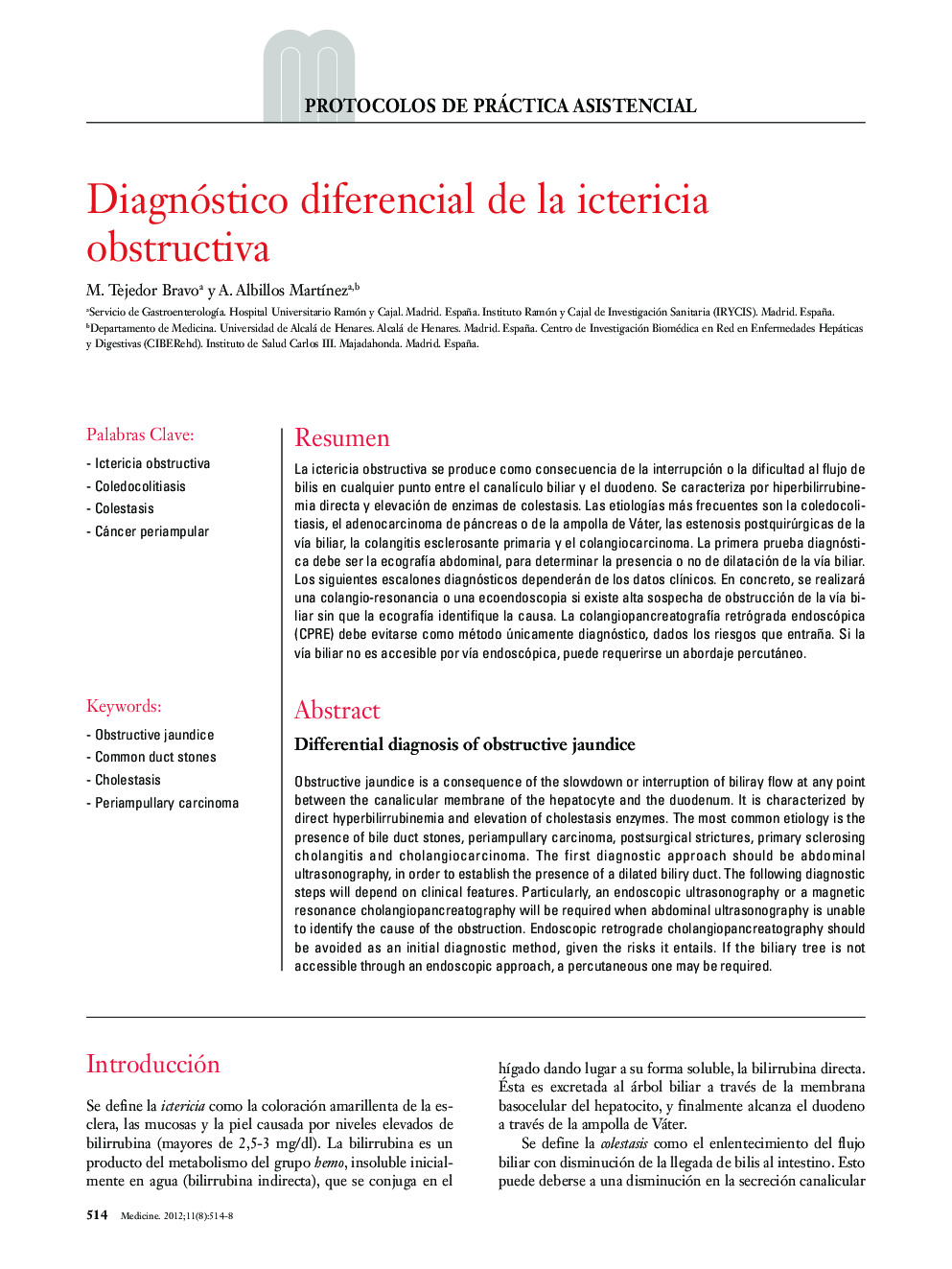| Article ID | Journal | Published Year | Pages | File Type |
|---|---|---|---|---|
| 3809649 | Medicine - Programa de Formación Médica Continuada Acreditado | 2012 | 5 Pages |
Abstract
Obstructive jaundice is a consequence of the slowdown or interruption of biliray flow at any point between the canalicular membrane of the hepatocyte and the duodenum. It is characterized by direct hyperbilirrubinemia and elevation of cholestasis enzymes. The most common etiology is the presence of bile duct stones, periampullary carcinoma, postsurgical strictures, primary sclerosing cholangitis and cholangiocarcinoma. The first diagnostic approach should be abdominal ultrasonography, in order to establish the presence of a dilated biliry duct. The following diagnostic steps will depend on clinical features. Particularly, an endoscopic ultrasonography or a magnetic resonance cholangiopancreatography will be required when abdominal ultrasonography is unable to identify the cause of the obstruction. Endoscopic retrograde cholangiopancreatography should be avoided as an initial diagnostic method, given the risks it entails. If the biliary tree is not accessible through an endoscopic approach, a percutaneous one may be required.
Related Topics
Health Sciences
Medicine and Dentistry
Medicine and Dentistry (General)
Authors
M. Tejedor Bravo, A. Albillos MartÃnez,
